Active water harvesting case study
Underwood Family Sonoran Landscape Laboratory.
College of Architecture, Planning, and Landscape Architecture (CAPLA).
University of Arizona.
Tucson, Arizona, USA.
Latitude 32.2˚.
Elevation 2,555 feet (779 meters).
Average annual precipitation 11 inches (280 mm).
Average annual humidity 29%…
The following is excerpted and adapted from Rainwater Harvesting for Drylands and Beyond, Volume 2, 2nd Edition…
Many different free on-site waters such as rainwater, stormwater, air conditioning condensate, and greywater can be harvested in an integrated manner. Though only the highest quality waters (roof runoff and condensate) are typically harvested in an active tank system. While the lower quality waters (stormwater and greywater) are typically harvested within passive water-harvesting earthworks, whose life can better filter out the waters’ impurities. These passive systems also utilize the overflow from the active cistern system(s). All these waters are harvested at one of my favorite oases—the Underwood Family Sonoran Landscape Laboratory designed by Ten Eyck Landscape Architects—in an otherwise over-paved built environment. Leaving the exposed solar oven-like parking lot, you walk into a cool sanctuary of living classrooms and hang out spots beneath a canopy of abundant shade trees and diverse life. And all this is supported almost entirely by “wastewaters” harvested from adjoining buildings.
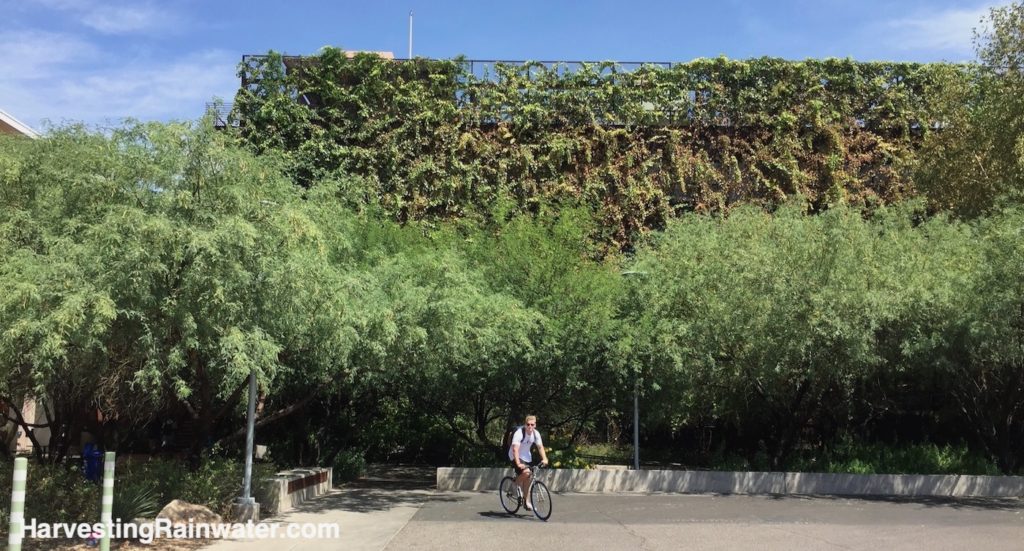
On average, 85,000 gallons (322,000 liters) of rainwater a year enters the landscape from the roofs of two adjoining buildings. More surprisingly, 95,000 gallons (360,000 liters) of air conditioning condensate a year comes to the landscape from the HVAC (heating, ventilation and air conditioning) units on these roofs, despite Tucson’s dry climate. The perspiring, respiring bodies of many students and professors inhabiting the buildings increase the moisture in the recirculating air, which the HVAC systems capture. Additionally, the landscape harvests backwash water from the daily maintenance of an adjoining sand filter well (about 200 gallons [760 liters] per day) and greywater from the building’s drinking fountains. Sink greywater is not captured because students doing studio design projects might unconsciously pour toxic solvents, paints, or glues down sink drains.
See here for the ENERGY costs of condensate and other waters,
and information on how the refrigerant in air conditioners, refrigeration units, freezers, and ice machines is a major contributor to climate change.
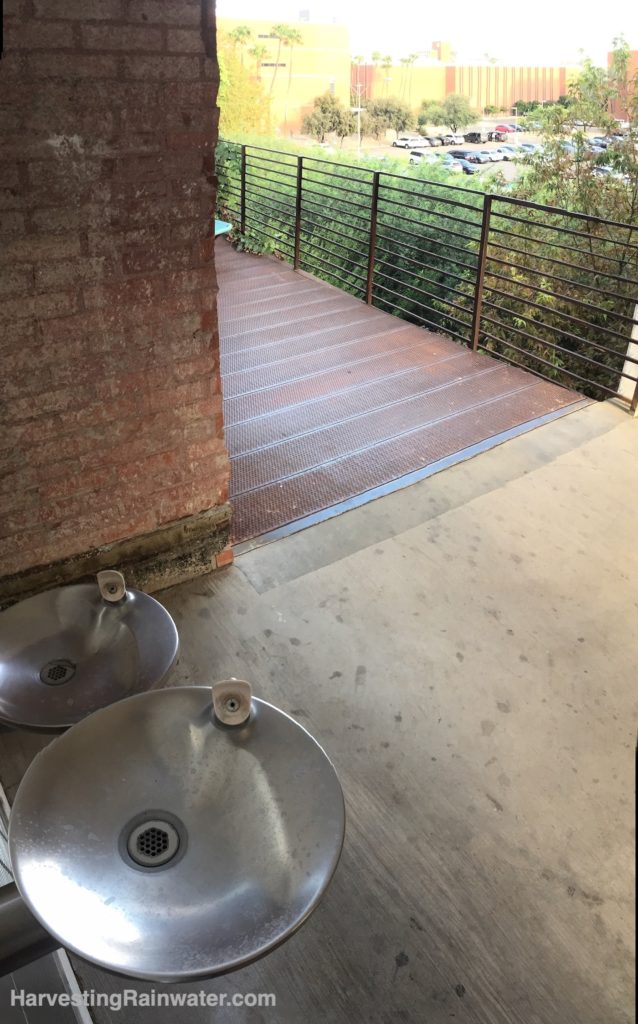
An 11,600-gallon (43,900-liter) cistern actively captures some of these waters (namely the roof runoff and condensate), while the rest—along with overflow from the cistern—is passively harvested and captured by a small pond and arroyo-like swale and its infiltration basins meandering through much of the landscape. In times of no rain, the cistern distributes its water to the landscape via a drip irrigation system.
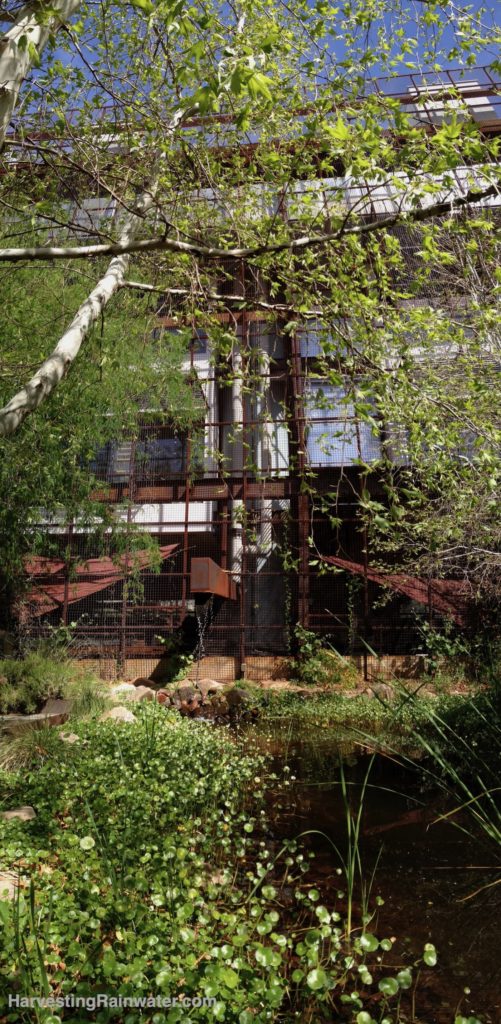
Five biomes of the Sonoran Desert—wetland, canyon, riparian, mesquite bosque, and upland Sonoran—are represented by microclimate groupings of native plant species. Endangered Gila topminnows and lowland leopard frogs are raised in the wetland’s pond. Great blue herons, roadrunners, and hawks visit to partake of the bounty. Students can eat wild grapes, chuparosa flowers, and mesquite pods.
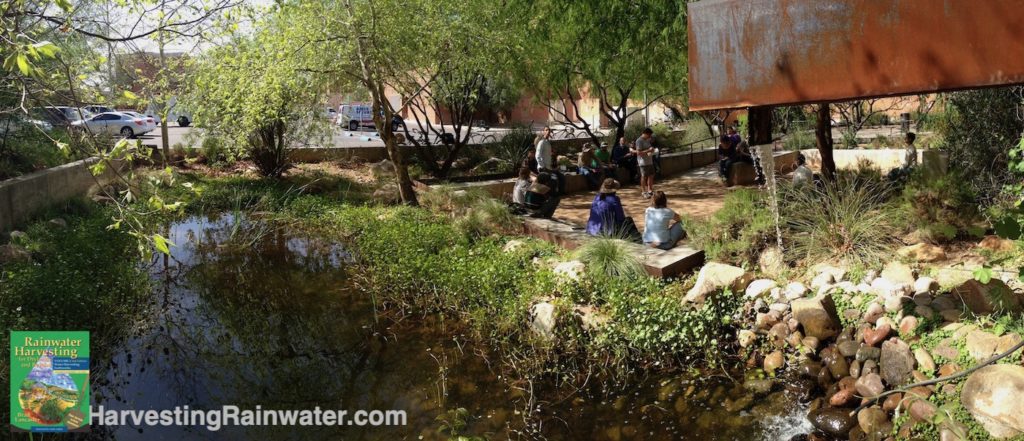
Most of the landscape’s water needs (83 to 87%) are met by these on-site “wastewaters” turned “resource waters,” though 100%+ (to give back more than one takes) could easily be met with a few small changes:
• Reduce water needs—replace a few high-water-use plants, such as an Arizona sycamore tree, with a lower-water-use tree.
• Increase water supply—direct more runoff surfaces, such as a parking lot or another roof, to the landscape.
• More efficiently slow, spread, and sink the water within the landscape—direct cistern overflow to the highest point of the landscape (currently it is directed to the midpoint or mid elevation of the landscape), which can then overflow to—and help irrigate—all points below.

• Create higher-capacity basins and/or vertical mulching within the swale and upland Sonoran biome to increase the amount of moisture captured in the soil before overflow water escapes.
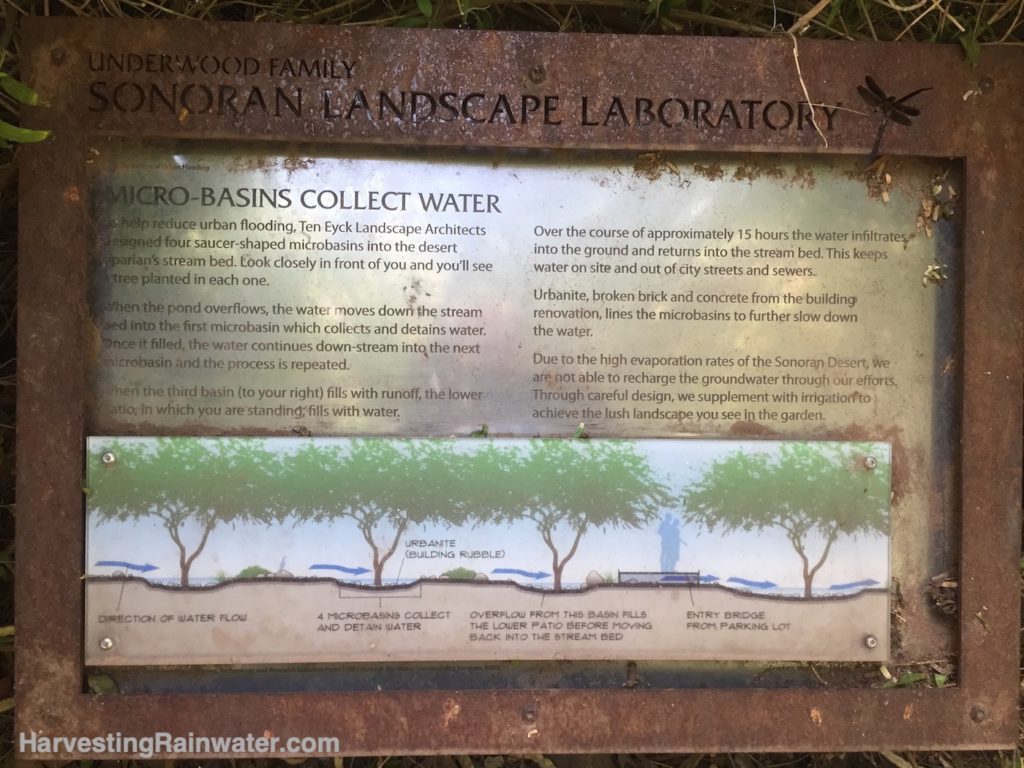
Part of the vision of this biosponge-like landscape was to illustrate a new way of landscaping, creating a model for how to transform the campus and regional landscaping. This got off to a great start with a number of local landscaping companies volunteering their time to implement the project and become familiar with these new ways of water management. The forward-thinking landscape has also lured more students into the college that want to be part of such positive change. Former associate dean Dr. Ron Stoltz, who oversaw the project, now wants to see the parking lot south of the CAPLA landscape transformed into the second-largest green space on campus, irrigated solely by discarded waters from adjoining rooftops, hardscapes, air conditioners, and greywater drains. You needn’t look far to see that this works.
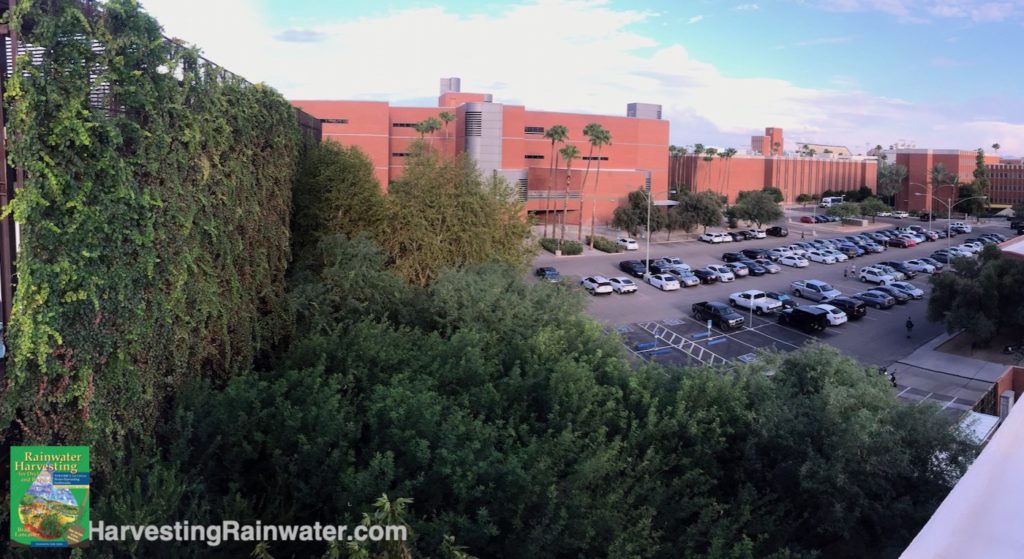
To see how this project transformed a dehydrating concrete-lined drainage-way into a hydrating cobble infiltration-way see the end of chapter 7 in Rainwater Harvesting for Drylands and Beyond, Volume 2, 2nd Edition.
For more
• See this website for CAPLA’s Underwood Family Sonoran Landscape Laboratory
• See this self-guided Tucson water-harvesting tour
and
See the new, full-color, revised editions of Brad’s award-winning books
– available a deep discount, direct from Brad:

Volume 1
Volume 1 contains more information on active water-harvesting systems including a set of guiding principles for cistern systems, and how to size your tank based on how much water is running off your collection surface (roof) and your water needs. The book also contains information on passive water harvesting systems to which you can direct your tank overflow.

Volume 2
Volume 2 does not cover active water-harvesting systems, but does contain detailed step-by-step instructions on how to design, build, and grow dozens of different passive systems to which you can direct your tank overflow, or dole out your stored water.
